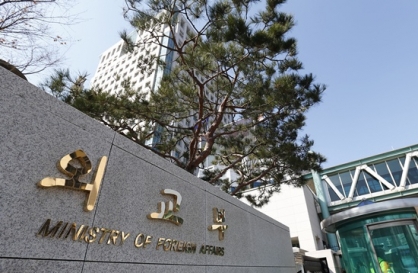
By Oh Ju-seok
Translated by Lee Subun, Cho Yoon-jung
(Hollym)
Of the many experts on Korean traditional art and paintings, the late scholar and author Oh Ju-seok had his own way of appreciating them.
Oh believed one should “see them through the eyes of the past, and feel with the heart of the past,” while trying to imagine what the art must have meant for the people in those days.
One of his popular books on Korean traditional art, “Special Lecture on Korean Paintings” was posthumously translated into English and published last month. Originally published in Korean in 2003, the book offers Oh’s insights on how to appreciate Korea’s traditional paintings, the traditional philosophy and values embedded in them, as well as the history and culture of the late Joseon Dynasty period.
Arguably the most important chapter of this book is the first, where Oh shares the three principles he thinks one should use when trying to appreciate traditional Korean paintings.
One has to do with the distance between the viewer and the art.
“Whether Western art or Asian art, the best distance from which to appreciate a painting is about equal to its diagonal length,” Oh writes in the book. “If you are a very laid-back kind of a person, then you could stand back about 1.5 times the length of the diagonal.”
The second principle is to always look at the paintings from the top right to the bottom left, as if stroking them with your eyes.
“Because we now write in horizontal lines, we look at things from the top left, which is in fact the habit of Westerners,” he writes. “But our ancestors wrote Chinese characters in vertical lines, as they did with Hangeul, the Korean script. … And many artists composed their paintings along the vertical lines (as well).”
The third principle, Oh writes, is to enjoy them slowly. Having spent more than 10 years as a curator at Ho-Am Art Museum and the National Museum of Korea, Oh encountered many visitors who would only care about the title and the written explanations of the artworks, rather than contemplating on the paintings for a long time. He says one must focus on the painting itself, on top of everything else.
“What does it mean to enjoy an artwork?” Oh asks in the book. “While tasting the work of art, the whole body (must) tremble in complete rapture. This sort of response is in fact the resonance of the inner soul.”
Oh, who majored in Eastern History and earned his master’s degree in archaeology and art history at Seoul National University, worked as a culture reporter at The Korea Herald and spent some 12 years as a curator of Ho-Am Art Museum and the National Museum of Korea. He later took teaching positions at Chung-Ang University and Yonsei University, and toured the country giving lectures on traditional Korean art. He died of leukemia and conscious fasting in 2005. He was 49.
(dyc@heraldcorp.com)
-
Articles by Korea Herald




![[Weekender] Korean psyche untangled: Musok](http://res.heraldm.com/phpwas/restmb_idxmake.php?idx=644&simg=/content/image/2024/05/02/20240502050841_0.jpg&u=)

![[Eye Interview] 'If you live to 100, you might as well be happy,' says 88-year-old bestselling essayist](http://res.heraldm.com/phpwas/restmb_idxmake.php?idx=644&simg=/content/image/2024/05/03/20240503050674_0.jpg&u=)











![[Herald Interview] Director of 'Goodbye Earth' aimed to ask how we would face apocalypse](http://res.heraldm.com/phpwas/restmb_idxmake.php?idx=652&simg=/content/image/2024/05/03/20240503050732_0.jpg&u=)
